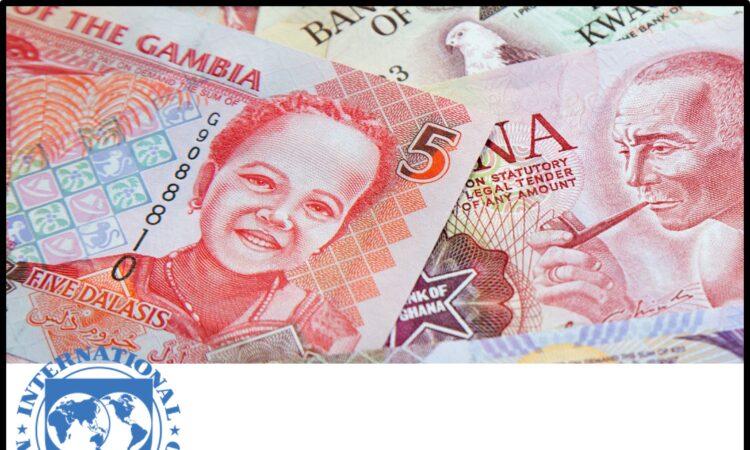
By Tobias Adrian, Gaston Gelos, and David Hofman
Sub-Saharan African countries face important monetary policy challenges. The pandemic dented economic growth, and even now the recovery is likely to leave output below the pre-crisis trend this year. Several countries in the region have also seen inflation increase, a challenge that is in some cases compounded by fiscal dominance emanating from high public debt levels, write TOBIAS ADRIAN, GASTON GELOS, and DAVID HOFMAN .
Many of these economies may also face capital outflows as the major central banks in advanced economies withdraw policy stimulus and raise interest rates in the period ahead. The economic impact of the conflict raging in Ukraine—including the attendant sharp rise in energy and food prices—is likely to further intensify the challenges.
How should countries in sub-Saharan Africa manage this volatile environment?
Exchange rate considerations
Countries with managed or free-floating exchange rate regimes generally benefit from allowing currencies to adjust, while focusing monetary policy on domestic objectives.
That said, many countries in sub-Saharan Africa with floating exchange rate regimes have characteristics and vulnerabilities that can limit the benefits from fully flexible rates. For instance, dominant currency pricing (i.e., rigid export prices in US dollar terms) can weaken the beneficial trade adjustments associated with flexible rates.
Moreover, shallow markets (i.e., markets with limited liquidity) can amplify exchange rate movements and yield excessive volatility. Foreign exchange markets tend to be shallow in many countries in the region, as evidenced by wide spreads between bid and ask prices.
High foreign-currency denominated liabilities are also a key vulnerability in several economies. In the presence of large currency mismatches on balance sheets, exchange rate depreciations can undermine the financial health of corporates and households. And weak central bank credibility can cause exchange rate changes to have a bigger effect on inflation (high passthrough). Such currency mismatches and high passthrough can cause output and inflation to move in opposite directions following shocks, thereby worsening the tradeoffs that policymakers face.
There is also evidence that the exchange rate passthrough in low-income countries is substantially higher than it is in more advanced economies, which poses a particular problem given the often heavy dependance on food and energy imports.
How should countries that exhibit such vulnerabilities manage their policy responses?
First, it remains important to reduce the vulnerabilities over time. This includes reducing balance sheet mismatches; developing money and foreign currency markets; and reducing exchange rate passthrough by building monetary policy credibility. Many of these are areas where IMF technical assistance can help.
But in the near-term—while vulnerabilities remain high—the IMF’s work toward an Integrated Policy Framework suggests that using additional tools may help ease short-term policy trade-offs when certain shocks hit. In particular, where reserves are adequate and these tools are available, foreign exchange intervention, macroprudential policy measures and capital flow measures can help enhance monetary policy autonomy, improve financial and price stability, and reduce output volatility.
For instance, simulations with the framework’s models suggest that in response to a sharp tightening of global financial conditions or other negative external financial shock, a country exhibiting such vulnerabilities could improve immediate economic outcomes by using foreign exchange intervention to reduce exchange rate depreciation and thereby limit the inflationary impact and reduce negative balance sheet effects. This results in higher output and lower inflation than would have been feasible without the use of the additional policy instrument.
For central banks considering such policies, however, a few important qualifiers are in order. Importantly, the tools should not be used to maintain an over- or undervalued exchange rate. Moreover, while additional tools can help alleviate short-term tradeoffs, this benefit needs to be carefully weighed against potential longer-term costs. Such costs may include, for instance, reduced incentives for market development and appropriate risk management in the private sector.
Communicating about the joint use of multiple tools in a more complex framework can be very challenging, too, and expanding the set of policy options may subject central banks to political pressures. Central banks will thus need to weigh the benefits against potential negative impacts on their own transparency and credibility, especially in circumstances where policy frameworks are not yet well established.
The list covers evaluation ratings that the FDIC assigned to institutions in January 2022.
- Adrian, Gelos, and Hofman are on the staff of the IMF.
Editor’s Note: Follow the link below to read the charts in the original article: https://blogs.imf.org/2022/04/04/how-africa-can-navigate-growing-monetary-policy-challenges






